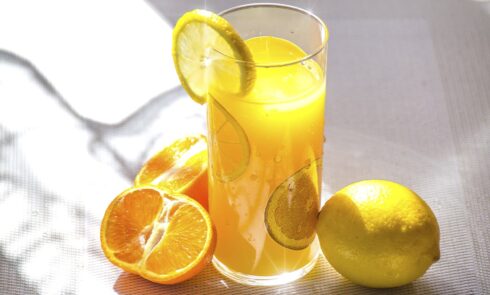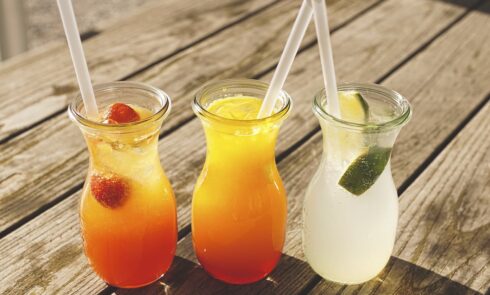Eggnog Gogol – Germany
Who among us does not remember this unusual sugary taste, familiar since childhood? I think any child would agree that you can’t think of a tastier cure for colds and loss of voice! 😉 The basic components of the drink are whipped egg yolks and sugar, but there are also many variations – with the addition of honey, vanillin, fruit and berry juices, and even wine! There are several versions of the origin of the name of the treat – from English hug-mug, hugger-mugger, from Polish kogel-mogel, from German Kuddelmuddel (mishmash). Versions of the drink’s origin also abound. One ascribes the invention to the German confectioner Manfred Köckenbauer. Another one tells of a singer named Gogel, who lost his voice and invented such a sweet and delicious recipe for cure.
Ayran – Central Asia, Caucasus
Almost all the peoples of the world sooner or later appreciated the taste and nutritional properties of fermented milk. The name of the final product and fermentation techniques can vary greatly from country to country. One need only think of yogurt and ryazhenka, matsun and yogurt, chal and kurungu, koumiss and kefir, so familiar to us all. Ayran (tan) is widespread among the peoples of Central Asia, the Caucasus and Bashkiria. It is prepared from fermented cow, sheep or goat milk, diluted with water. Often mint leaves or sprigs of dill are added to the drink to achieve a special freshness. Its usefulness is hard to overestimate: it quenches thirst, strengthens the nervous system, fights excess weight, and of course, quickly relieves hangover syndrome!)
Aojiroo – Japan
To tell you the truth, I have never tried this wonder (probably because I did not get to Japan) – but when I came across it on the web, I could not avoid it. Aojiru is a Japanese vegetable drink consisting mainly of cabbage juice. If you translate its name literally from Japanese, you get “green drink” or “green juice,” which is exactly what it looks like! The drink was invented in 1943 by Dr. Niro Endo, a military doctor who experimented with various vegetable juices to find the best combination to keep people healthy and strong during wartime.
Frappe
It is rather difficult to give a clear definition of this drink, as well as to give its exact recipe – too many varieties of preparation exist today. Traditionally, frappe is a kind of thick cold cocktails with coffee, ice cream, cold milk and fruit and berry syrups as its components. All components are whipped in a mixer or shaker and very often the drink is served with crushed ice. Fruit cocktails are garnished with berries, fruit slices, nuts or whipped cream. The most common frappe is made with coffee and milk.
Mate – Argentina
I’m sure all of us have at least once heard or tasted this strange sounding word. Yerba mate is a tonic drink with high caffeine content. It was first used in Argentina, Uruguay, Paraguay and southern Brazil. Mate is brewed from the dried and crushed leaves and stems of the Padula paraguarensis tree. The name “mate” comes from the word “matí”, which was used to refer to the pumpkin (Lagenaria vulgaris) that is traditionally used to drink mate (calabas or calebas). Mate is recommended as a remedy that reduces the damaging effects of neuroses and depressions, affects the general psycho-emotional state, improves mood and increases activity.
Ovaltine – Switzerland
I do not know whether this drink can be attributed to this list – for as it turned out, it is not the name, but a trademark! It was invented in Bern, Switzerland, where it is still known by its original name Ovomaltine (from ovum, Latin for “egg” and malt, which were its original main ingredients). Subsequently, a chocolate variety of ovaltine also appeared, which is a powder that is diluted with cold or hot milk. These days, Ovaltine has gained popularity all over the world – in different variations and often under different names.
Masala Tea – India
With this drink I, like many, had a strange story. Before my first trip to India, I never put a grain of sugar in my tea, thinking that it kills the taste of the drink, and English tea with milk seemed to me like some kind of sophisticated perversion! And here it is – tea with milk and spices, and even brought to the state of syrup by the amount of sugar added to it!!! And at the same time… it turned out to be one of the most delicious drinks I’ve ever tasted in my life! Got hooked instantly and forever! 😉 In the preparation of masala tea a huge role played by all the stages and components – the quality of tea and milk, the order of their mixing and, of course, the composition of spices! For the preparation of tea are usually used so-called “warm” spices: cardamom, cinnamon, ginger, fennel seeds, black pepper and cloves.


